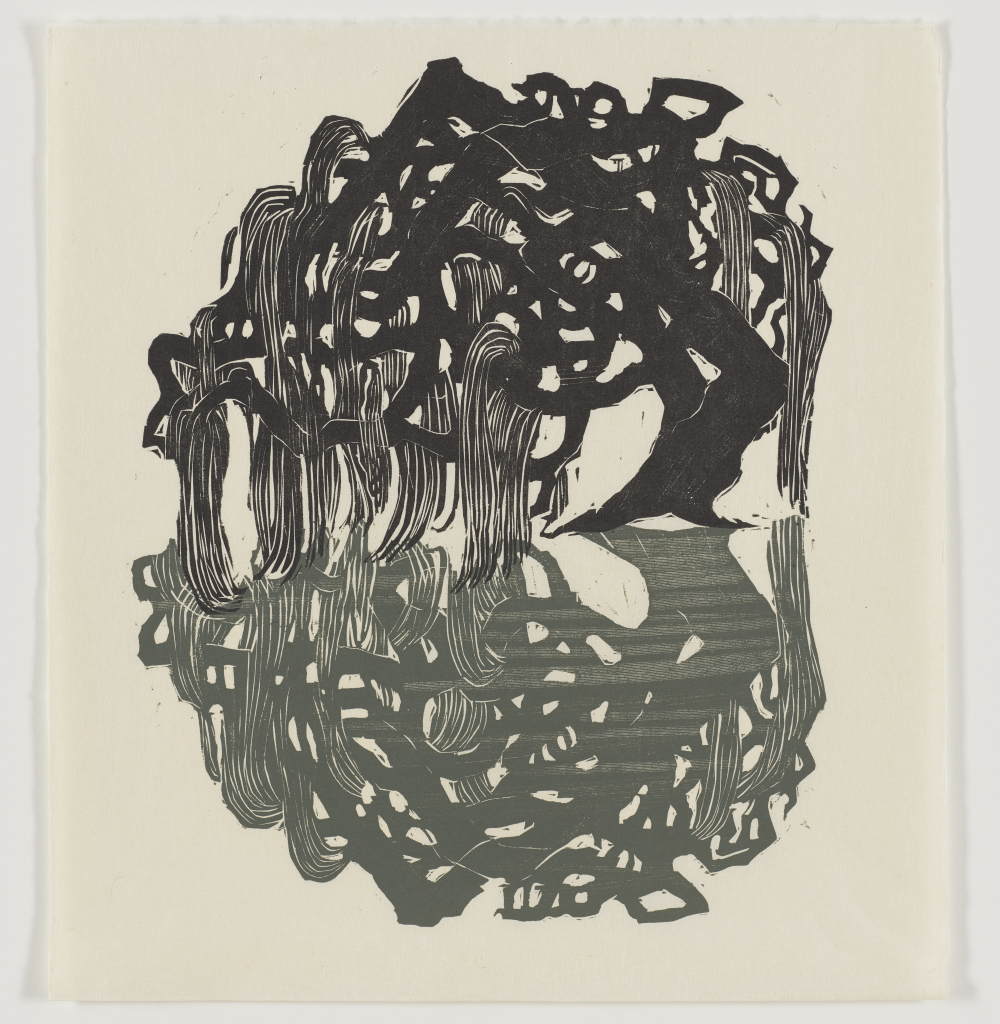Solitude, from the portfolio Solitude

Matsubara Naoko, Solitude, from the portfolio Solitude, 1971, color woodcut print on hōsho pure kōzo paper, Gift of Marge Riley, © 1971 Matsubara Naoko, 88.22.1
This work is not currently on view.
- Title
Solitude, from the portfolio Solitude
- Related Titles
original language: Solitude
portfolio (original language): Solitude
- Artist
- Related People
publisher: Aquarius Press (American)
- Date
1971
- Period
Japan: Shōwa period (1926-1989)
- Medium
color woodcut print on hōsho pure kōzo paper
- Edition
78/200
- Dimensions (H x W x D)
image: 14 in x 11 1/4 in; sheet: 15 3/8 in x 14 3/8 in
- Collection Area
Asian Art; Graphic Arts
- Category
Prints
Japanese Modern Prints
- Object Type
relief print
- Culture
Japanese
- Credit Line
Gift of Marge Riley
- Accession Number
88.22.1
- Copyright
© 1971 Matsubara Naoko
- Terms
Matsubara Naoko lived in New England for several years in the late 1960s and early '70s. While there, she made a number of prints based on regional scenery and history, culminating in the portfolio Solitude. Inspired by an essay of that name appearing in Henry David Thoreau's Walden (1854), the portfolio is a sumptuous production comprised of eleven single-sheet prints, a portfolio box covered with a twelfth print, and a booklet of the text.
For the carving blocks she imported bass plywood from Japan, and all but one of the images were printed on paper made to order by Iwano Ichibei, a craftsman who had been designated a "Living National Treasure" in Japan.
Like Thoreau's observations in his essay, Matsubara's viewpoint shifts between near and far. From microcosm to macrocosm, the universe pulsates with energy.
- Exhibitions
2004 The Enchantment of the Artist's Book: Selections from the Collection of the Portland Art Museum Portland Art Museum









